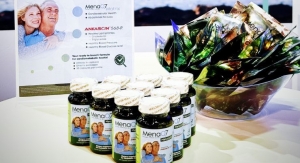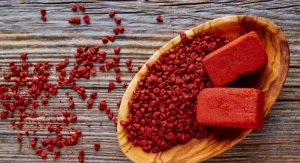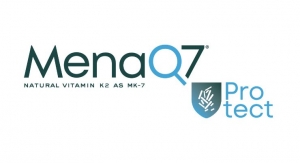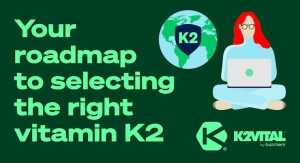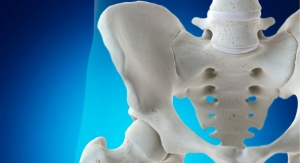Lisa Olivo, Associate Editor01.05.16
Convenience and taste often trump nutritional composition in the standard Western diet. As a result, a growing number of consumers are overfed, undernourished, and in many cases, vitamin deficient.
Data from the Centers for Disease Control and Prevention (CDC) indicated nearly 90 million Americans are vitamin D deficient; about 30 million are deficient in vitamin B6; 18 million lack vitamin B12; and nearly 16 million are vitamin C deficient.
In September 2015, physician and author Tieraona Low Dog, MD, spoke with congressional staffers at an educational briefing to discuss the CDC’s findings and the critical need for vitamin supplementation among Americans. Her presentation—“Life Fortified: A Physician’s Case for Dietary Supplements”—was hosted by the Congressional Dietary Supplement Caucus (DSC) in cooperation with the American Herbal Products Association (AHPA), the Consumer Healthcare Products Association (CHPA), the Council for Responsible Nutrition (CRN), the Natural Products Association (NPA) and the United Natural Products Alliance (UNPA).
Dr. Low Dog expressed concern about hearing “misleading sound bites on the evening news that people don’t need vitamins because they get all the nutrients they need from their diet, because it isn’t just patients who hear this, doctors also hear it repeatedly.” Dr. Low Dog added, “This mantra that Americans get all the nutrients they need from food is simply not true and the data demonstrates it is false. It is much harder than you think to get the nutrients you need from food alone.”
To more easily fill nutritional gaps, consumers continue to see vitamin supplements as safe and effective adjuncts to their diet. In fact, when it comes to confidence, Americans have the greatest assurance in the vitamins and minerals category compared to all others, according to the 2015 CRN Consumer Survey on Dietary Supplements. The survey found 85% of U.S. adults have overall confidence in the safety, quality and effectiveness of the vitamins/minerals category Additionally, the survey discovered 78% of supplement users take a multivitamin; 32% take vitamin D; 27% take vitamin C; 18% take vitamin B/B complex; 13% take vitamin E; and 5% take vitamin K. Multivitamins, vitamin D and vitamin C were the top three most-popular supplements among supplement users.
This popularity translates to significant sales within the nutraceuticals space. Multivitamin supplements lead the pack, accounting for more than $1 billion in sales within the $3.8 billion vitamins and minerals market, according to data from SPINS, Schaumburg, IL [52 weeks ending Nov. 1, 2015 within natural supermarkets (excluding Whole Foods), specialty supermarkets, conventional multi outlet (includes Walmart)]. For single-letter vitamins, B earned more than $531 million; C brought in more than $454 million; A, D and K combined brought in more than $365 million; and E earned about $74 million.
Global food and drink analysts at Mintel International reported that while consumers are more likely to use a multivitamin, the gap between use of single-letter vitamins and multivitamins is beginning to close. Mintel reported that sales of single-letter vitamins grew by nearly 7% in multi-outlet channels, while sales of multivitamins grew by just 2%. Growth of single-letter formulas could be attributed to consumers using vitamins to address specific health concerns, tapping into the supplement personalization trend, while multivitamins are seen as a more generic approach to overall health.
Category Challenges
While vitamins are considered a supplement-user staple, the category still faces challenges.
Ensuring the safety and efficacy of ingredients is a pressing and timely issue for the industry overall in light of recent FDA crackdowns on illegal drugs masquerading as supplements, as well as state attorneys general investigations of supplements in 2015 in New York and Oregon.
“As an industry, one of our largest challenges is ensuring that our customers can differentiate the high quality, ethical companies that supply most of the marketplace from the disreputable firms that taint our reputation,” stated Alice Wilkinson, director of nutritional innovation at Watson Inc., West Haven, CT. However, she stressed that this becomes increasingly difficult when misinformation about the industry and product quality is publicized for what she sees as an attempt at political gain.
Deanne Dolnick, science director, TR Nutritionals, Alpharetta, GA, echoed these concerns. “Consumers may hear something negative in the news regarding one dietary supplement (e.g., DMAA) and it hurts the entire industry,” she said. “All they hear is that the dietary supplement industry is not regulated by the FDA and therefore is not regulated at all. I believe that there is a total lack of understanding by the general public of how much testing actually goes on by conscientious vitamin suppliers such as TR Nutritionals.”
Ms. Wilkinson said recent strides toward accountability for unethical companies in the industry are long overdue. “Unfortunately, the media continues to misrepresent these few as a representation of the industry as a whole, thus confusing the consumer. I believe it is still unknown exactly how consumers will react to these confusing messages.” She worries that some consumers may believe the entire category is untrustworthy, while others are comfortable separating vitamins and minerals as a different, more dependable segment compared to other active ingredients.
Dan Murray, vice president of business development, Xsto Solutions, Morristown, NJ, believes vitamins “generally get a pass when the mud starts flying in the supplement world.” He added, “The long history of science and benefit seems to outlast any unflattering news reports. Even when I meet people who are not regular consumers of vitamins they have a positive opinion of the category.”
Michael Sodaro, vice president of sales, Nutralliance, Inc., Yorba Linda, CA, suggested one problem in the vitamin supplements category is the volume of choices, which could lead to confusion among consumers—(e.g., natural vs. synthetic, soy vs. non-soy, GMO vs. non-GMO). “Along with all of the different forms that each one can be delivered makes for some confusion for the consumer.”
Demand for all things “natural” has also been an area of concern, according to Mr. Murray. “Even without a formal definition, I think the ‘natural’ question is one issue that vexes vitamins,” he said. “Consumers want natural and we simply can’t reproduce most of the 10 vitamins in a safe and economically viable way to deliver what most would consider a ‘natural’ product.”
The specificity of certain vitamins for particular age groups or health concerns can also sometimes hold back single-letter vitamins from reaching a broader base. Using vitamin K2 as an example, Eric Anderson, senior vice president global sales and marketing of NattoPharma USA, Metuchen, NJ, explained how the company has been working to educate the public in order to overcome being pigeonholed as a supplement just for the elderly.
“One significant challenge is convincing more vitamin manufacturers that the bone and cardiovascular benefits of vitamin K2 are not reserved strictly for older populations,” he said. “The foundation for health has to be established early, which means including this essential nutrient in children’s multivitamins and/or fortified products.”
Vitamin K2, he noted, is recognized as being essential for the activation of K-dependent proteins that build strong bones and contribute to cardiovascular health. “But the Western diet—one dominated by processed, nutrient-lacking foods—has created a population, particularly children, deficient in this essential nutrient. Without adequate vitamin K intake, calcium cannot be properly utilized in the body to build healthy, strong bones. As up to 90% of peak bone mass is acquired by age 18 in girls and by age 20 in boys, youth is the best time to ‘invest’ in one’s bone health.”
Letters for Health
While many diseases associated with vitamin deficiency—such as scurvy from lack of vitamin C or rickets from lack of vitamin D—are rare today, many American diets are still lacking in essential nutrients, according to Marci Clow, MS, RD, senior nutritionist at Rainbow Light, Santa Cruz, CA. Citing the Dietary Guidelines for Americans, she said key nutrient levels are low enough to be considered a public health concern. Among the nutrients Americans lack most are vitamins C and D, while folate and B12 are of concern for specific populations. “The best way to avoid nutrient deficiencies is to eat a wide variety of whole foods, with plenty of fruits and vegetables,” while supplements should play a role in filling nutritional gaps.
Vitamins D & C. It is hardly a coincidence that two of the leading ingredients in the vitamin category are also two of the vitamins consumers are lacking most.
Vitamin D is an increasingly common deficiency among consumers, and supplement sales have subsequently grown about 14.2% from 2014-2015, according to SPINS, now accounting for nearly $239 million in the conventional multi-outlet channel.
“This vitamin has many physiological functions ranging from immune support to research suggesting a role in prevention of some cancers. Vitamin D is best known for its role in bone health, and a long-term deficiency could lead to softening of the bones,” explained Ms. Clow. Vitamin D naturally exists in very few foods (such as fatty fish, egg yolks, liver and mushrooms), so fortification through functional foods like dairy and juices is on the rise, she noted. “Our bodies also manufacture vitamin D from exposure to the sun, but this capability declines as we age and those who don’t regularly get enough sunshine may need to supplement with vitamin D.”
Vitamin C was ranked as the fifth most commonly used dietary supplement, according to the Natural Marketing Institute (NMI) report “2016 Supplements/OTC/RX Consumer Trends.” Referencing NMI’s findings, Ms. Clow asserted that 27% of current supplement users reported using vitamin C supplements. Vitamin C, she said, “has been touted for numerous uses over the years, most notably its role in immune health. Many consumers reach for vitamin C at the first sign of cold symptoms, with some data indicating a role in shortening the duration of symptoms, yet clinical data supporting this role is inconsistent.”
Research has also explored higher vitamin C intakes, from either diet or supplements, and its association with a reduced risk of cardiovascular disease. Vitamin C also benefits “the development and maintenance of collagen, cartilage and blood vessels; is an antioxidant that helps lessen oxidative stress; and it is critical for the absorption of iron,” Ms. Clow noted.
Vitamin K. Vitamin D’s success overlaps with that of vitamin K, which also has implications for bone and cardiovascular health. “As a commodity it can be difficult to make a straight vitamin ‘sexy’ but we certainly saw it with vitamin D and we are now seeing it with vitamin K2,” observed Mr. Murray of Xsto Solutions, which distributes Kappa BioScience’s K2VITAL, vitamin K2 as MK-7. “When we see a single vitamin soar in terms of sales growth, it’s all about the relevancy of the application and the supporting research. Both vitamins D and K2 offer tremendous benefit for the general population, but with both heart and bone benefits it’s a slam dunk for Baby Boomers and seniors.”
Mr. Murray added that emerging research supporting K2 for preserving cardiovascular health is continuing to build the vitamin’s popularity. “Interestingly, vitamin K2 was launched with a bone health focus, but it looks like the cardiovascular benefit is emerging as much more than a side story,” he said. “Arterial calcification research is shedding new light on what will no doubt become a ‘standard of care’ practice.”
With Baby Boomers entering their elderly years, as well as Gen Xers beginning to consider their own golden years, Mr. Anderson of NattoPharma believes vitamin K2 will continue to provide support for their health needs. “When considering this group, the two most significant health issues that cause concern are adverse cardiovascular events and potential fractures from weak, porous bones.”
Vitamin K2, he said, has been shown to activate inert Matrix Gla Protein (MGP), which is responsible for inhibiting calcium from depositing in the arteries and blood vessels. Calcium deposits can harden in the arteries, becoming an obstruction to blood flow to and from the heart, potentially leading to a heart attack. “Calcium accumulation in arteries is an actively regulated process,” he said, “strongly influenced by the vitamin K-dependent MGP—the most potent inhibitor of calcification presently known. However, to properly perform its inhibitory function, MGP must be activated by vitamin K2 in a carboxylation reaction. Vitamin K deficiency results in under-carboxylation of MGP, impairing MGP’s biological function.”
A recently published study in the journal Thrombosis and Haemostasis (Knapen MHJ et al. 2015) confirmed the protective effect on arterial health of Nattopharma’s MenaQ7 brand of vitamin K2 as MK-7. “Using pulse wave velocity (PWV) and ultrasound techniques to collect cardiovascular measurements on the same cohort from the three-year bone study, researchers randomly assigned 244 healthy post-menopausal women who took a daily nutritional dose (180 mcg) of MenaQ7 for three years, or placebo,” explained Mr. Anderson. “At the study’s conclusion, the Stiffness Index in the MenaQ7 group with initial high arterial stiffness had decreased significantly compared to the slight increase in the placebo group (specifically: 0.67 ± 2.78 vs. +0.15 ± 2.51, respectively, p=0.018). Results confirmed that MenaQ7 not only inhibited age-related stiffening of the artery walls, but also made a statistically significant improvement in vascular elasticity.”
He added that bone health research supporting MenaQ7 published in Osteoporosis International (Knapen MHJ et al. 2013) found that supplementation with 180 mcg over three years among 244 healthy post-menopausal women resulted in significantly decreased circulating inactive osteocalcin, the biomarker that reveals bone and vitamin K status. “After three years of supplementation, bone mineral content and bone mineral density, as well as bone strength (BS) were statistically significantly better for the MK-7 group as compared to the placebo group.”
Vitamin E. Vitamin E alpha-tocopherol packs an antioxidant punch by protecting cells from damage against free radicals. Benefits may also extend to inhibition of platelet aggregation and immune support.
A 2015 study published in Public Library of Science (PLOS ONE) found that 87% of 20-30 year old and 68% of 31-50 year old Americans do not have optimal serum alpha-tocopherol concentrations. Analysis of the findings suggested this is a concern, as vitamin E has been indicated as beneficial to reproductive health, as well as brain and liver function.
Archer Daniels Midland Company (ADM), Chicago, IL, recently launched two new natural source vitamin E products, Novatol Sunflower 5-67 Vitamin E and Novatol Sunflower Vitamin E Succinate derived from non-GMO sunflower oil.
According to the company, D-alpha-tocopherol is the only form found in nature, and is therefore retained by the body better than synthetic vitamin E. With a low viscosity and high d-alpha-tocopherol concentration, ADM said Novatol Sunflower 5-67 is ideal for soft gel capsules as well fortified foods and beverages. The company also underscored the ingredient’s stability; when exposed to air or intense processing temperatures the esters of d-alpha-tocopherol have reduced susceptibility to degradation allowing for increased flexibility in product formulations. These benefits led to the creation of d-alpha-tocopheryl acid succinate, a sunflower-based form.
The high-concentration powder is neutral in taste and is designed for use in tableting applications such as multivitamins and chewable tablets.
Mike Zora, general manager for ADM’s WILD Flavors & Specialty Ingredients business unit commented, “With our naturally sourced vitamin E solutions, we can help manufacturers address many consumer health concerns such as the protection of cells from oxidative stress and the increase of antioxidant activity.”
Nutralliance recently launched Sunvitol E450-SDN—an organic, non-GMO, clean-label vitamin E product also derived from sunflowers using organic excipients/binders.
Mr. Sodaro of Nutralliance discussed the company’s efforts to spread the word about vitamin E supplementation to consumers, underscoring the importance of its natural source. “We are trying to educate the consumer on vitamin E, which is a large category in itself, or even the difference between naturally sourced and truly natural. We believe we have the ultimate choice for consumers in our sunflower-derived vitamin E. Non-GMO, non-soy, truly natural, and delivers the d-alpha-tocopherol source that consumers are demanding.”
B Group Vitamins. B group vitamins thiamine (B1); riboflavin (B2); niacin (B3); pantothenic acid (B5); pyridoxine, pyridoxal, pyridoxamine (B6); biotin (B7); folic acid (B9); and cobalamin (B12) all offer unique benefits for human health.
For instance, Ms. Clow with Rainbow Light described B12’s role in “cellular replication and helping to make neurotransmitters in the brain.” She said deficiency is fairly common in vegans, as B12 is mostly found in animal foods. In addition, the elderly struggle with deficiency, as B12 requires stomach acid for absorption, which declines with age.
TR Nutritionals’ Ms. Dolnick, noted the climb in vitamins that were once sold exclusively through the medical channel, including pyridoxal-5-phosphate (B6), methylcobalamin and cyanocobalamin (B12). “Brands being sold in health food, online, catalog and food/drug/mass want to differentiate their products. They are looking for the highest quality raw materials and seeking out those suppliers that specialize in these types of ingredients. TR Nutritionals has seen a substantial increase in sales of these three ingredients in particular. If a company is looking to sell a superior multivitamin, they need to do the research and seek out suppliers that can offer them ingredients from the best manufacturers and provide them with all of the regulatory documentation required for their GMPs. This is why TR is thriving.”
Niacin (B3) stands out to Xsto’s Mr. Murray as a long-term success story for heart health. “The sheer volume of positive data supporting niacin (as nicotinic acid) for cardiovascular health and triglycerides is amazing.”
As it is often grouped with B-complex vitamins, the water-soluble essential nutrient choline is important within this emerging vitamin category.
“Choline appears poised for significant growth after the FDA proposed a reference dietary intake (RDI) of 550 mg for adults as part of new food and supplement labeling guidelines first published in March 2014,” noted Tom Druke, strategic marketing manager, Balchem Corporation, New Hampton, NY. “With a final ruling targeted for early 2016, choline is expected to join the group of nutrients that will have an associated % Daily Value (DV) on food and supplement labels.”
A nutrient known for its benefits for prenatal, liver and cognitive health, choline is gaining attention according to Mr. Druke, due in part to the fact that more than 90% of people don’t get enough from dietary intake alone.
Women, he suggested, could have the most to gain from choline supplementation. “According to data from the CDC’s National Health and Nutrition Examination Survey (NHANES), women on average are only achieving 64% of their targeted choline intake. Choline is particularly important for women of childbearing age, based on recent research from Cornell University. In an ongoing study, Dr. Marie Caudill has found that increased choline intake during pregnancy may ease the baby’s response to stress by lowering levels of cortisol, the stress hormone (FASEB Journal, 2012).” He also noted that additional research from Cornell indicated supplemental choline might benefit placental function and decrease the risk of preeclampsia. “All of these findings point to increased choline demand during pregnancy and indicate that an upward revision to recommended dietary intakes for pregnant women is both needed and appropriate.”
In addition, choline could benefit adults dealing with cognitive function and focus issues, Mr. Druke suggested. “In a study published August 2015 in Nature, researchers in the Netherlands found that increased choline intake impacts the choices our brain makes with regard to the speed/accuracy tradeoff in tasks requiring hand-eye coordination. Researchers observed a decrease in pupil size after choline intake, which is a recognized cognition-sensitive biomarker. In addition, the decrease in pupil size was positively correlated with an increase in accuracy, suggesting the brain favors accuracy over reaction time to improve focus.” This, Mr. Druke said, may have implications for athletes and others who perform tasks in which accuracy, coordination and focus are essential.
Design & Dosage
Unique formats and delivery options are critical tools in making this longstanding category new and exciting to the next generation of supplement users.
Gummy formats in particular have led to expansion in the category, according to Mintel, which indicated that single-letter vitamins with the strongest performances “included those available in gummy formats, as evidenced by Vitafusion [from Church & Dwight Co. Inc., Trenton, NJ] and Sundown Naturals [NBTY, Ronkonkoma, NY]. Those that provided beauty from within benefits, such as [NBTY’s] Nature’s Bounty Optimal Solutions, also performed well. These products likely benefit from appealing to younger consumers, an increasingly important demographic for driving future market growth.”
Ease of swallowing and tablet size are a big concern among consumers, according to Rainbow Light’s Ms. Clow, in addition to the number of tablets per dose, taste and tolerability. “The most common are pill forms such as capsules, tablets and gelcaps, with alternate delivery types such as powders, gummies, bars, etc. becoming wildly popular in the last few years,” she added.
Citing data from NMI, Ms. Clow said tablets and capsules are still the preferred form for all demographics combined. “You’ll probably be surprised to know that the main consumer of gummies is someone over 55 years old. In fact, the sales of adult gummies have surpassed those for children. Millennials appear to indicate that pills/tablets/capsules are for old people and prefer to take their supplements via other deliver forms such as liquids/drinks, mints, gels, gummies, etc.”
“Gummies by far are the delivery option of choice at the moment,” opined Ms. Wilkinson at Watson. However, manufacturing challenges and the ability to deliver efficacious doses in this format have made development difficult. “This also becomes a valid challenge for the industry as the nature of gummy manufacturing and the matrix of the gummy itself limits the nutrients and levels of nutrients that can be added to a product. Right now it is simply not possible to fit all of the nutrients that might be typical in a tablet into a gummy.” This, she said, will hopefully lead to innovation among manufacturers, resulting in different and more efficient encapsulation processes that allow for greater fortification.
Functional foods and beverages also provide original delivery opportunities for vitamins, according to Xsto’s Mr. Murray. He pointed to the recent launch of Centrum VitaMints as an attempt by New York, NY-based Pfizer to tap into the novel delivery format trend.
Presenting a prime example of food fortification, NattoPharma’s Mr. Anderson referenced a new study utilizing MenaQ7 in yogurt, showing it was a successful delivery mode. “The Journal of Nutritional Science recently published a study demonstrating that vitamin K2 as MenaQ7 can be absorbed through yogurt, which makes the nutrient available to an even larger population. The new study, in which healthy patients received low doses of MK7 in a yogurt drink for three months, shows that the benefits of vitamin K2 can be obtained through other delivery systems than traditional dietary supplements.” This affirmation is a big step forward, according to Mr. Anderson, as it positions MenaQ7 as stable and effective in a whole new delivery form. “This means that we can make the nutrient available to more people, reach a younger audience and create a healthier generation.”
Vitamin supplements with organic source material are also emerging due to demand among health-conscious consumers and savvy manufacturers, noted Mr. Sodaro of Nutralliance. “Although extremely difficult to produce on a large scale it seems that consumers are trending toward obtaining their vitamins from food sources such as acerola for vitamin C.” The difficulty, however, is total amount of acerola in a tablet (for example), “would have to be substantial to deliver the same amount in a typical vitamin C tablet.”
Fortified Future
Looking ahead, Mr. Murray said specificity among consumers will drive interest in single-letter vitamin supplements. “We are already seeing a great trend toward slicing and dicing the consumer market into finer and finer categories. Identifying specific categories of consumers makes sense nutritionally as well as from a marketing standpoint.” Vitamins, he said, are not a “one size fits all” type of product, and he hopes to see a greater selection of product options to meet the diverse needs of supplement users.
Fast-paced modern lifestyles make healthy living a challenge for many consumers, and Ms. Dolnick believes this reality will continue to foster demand for vitamin supplementation. “We live in a society where people would rather take their vitamins in dietary supplement form than eat a healthy diet,” she said. “As long as this continues, the market will stay strong.”
Data from the Centers for Disease Control and Prevention (CDC) indicated nearly 90 million Americans are vitamin D deficient; about 30 million are deficient in vitamin B6; 18 million lack vitamin B12; and nearly 16 million are vitamin C deficient.
In September 2015, physician and author Tieraona Low Dog, MD, spoke with congressional staffers at an educational briefing to discuss the CDC’s findings and the critical need for vitamin supplementation among Americans. Her presentation—“Life Fortified: A Physician’s Case for Dietary Supplements”—was hosted by the Congressional Dietary Supplement Caucus (DSC) in cooperation with the American Herbal Products Association (AHPA), the Consumer Healthcare Products Association (CHPA), the Council for Responsible Nutrition (CRN), the Natural Products Association (NPA) and the United Natural Products Alliance (UNPA).
Dr. Low Dog expressed concern about hearing “misleading sound bites on the evening news that people don’t need vitamins because they get all the nutrients they need from their diet, because it isn’t just patients who hear this, doctors also hear it repeatedly.” Dr. Low Dog added, “This mantra that Americans get all the nutrients they need from food is simply not true and the data demonstrates it is false. It is much harder than you think to get the nutrients you need from food alone.”
To more easily fill nutritional gaps, consumers continue to see vitamin supplements as safe and effective adjuncts to their diet. In fact, when it comes to confidence, Americans have the greatest assurance in the vitamins and minerals category compared to all others, according to the 2015 CRN Consumer Survey on Dietary Supplements. The survey found 85% of U.S. adults have overall confidence in the safety, quality and effectiveness of the vitamins/minerals category Additionally, the survey discovered 78% of supplement users take a multivitamin; 32% take vitamin D; 27% take vitamin C; 18% take vitamin B/B complex; 13% take vitamin E; and 5% take vitamin K. Multivitamins, vitamin D and vitamin C were the top three most-popular supplements among supplement users.
This popularity translates to significant sales within the nutraceuticals space. Multivitamin supplements lead the pack, accounting for more than $1 billion in sales within the $3.8 billion vitamins and minerals market, according to data from SPINS, Schaumburg, IL [52 weeks ending Nov. 1, 2015 within natural supermarkets (excluding Whole Foods), specialty supermarkets, conventional multi outlet (includes Walmart)]. For single-letter vitamins, B earned more than $531 million; C brought in more than $454 million; A, D and K combined brought in more than $365 million; and E earned about $74 million.
Global food and drink analysts at Mintel International reported that while consumers are more likely to use a multivitamin, the gap between use of single-letter vitamins and multivitamins is beginning to close. Mintel reported that sales of single-letter vitamins grew by nearly 7% in multi-outlet channels, while sales of multivitamins grew by just 2%. Growth of single-letter formulas could be attributed to consumers using vitamins to address specific health concerns, tapping into the supplement personalization trend, while multivitamins are seen as a more generic approach to overall health.
Category Challenges
While vitamins are considered a supplement-user staple, the category still faces challenges.
Ensuring the safety and efficacy of ingredients is a pressing and timely issue for the industry overall in light of recent FDA crackdowns on illegal drugs masquerading as supplements, as well as state attorneys general investigations of supplements in 2015 in New York and Oregon.
“As an industry, one of our largest challenges is ensuring that our customers can differentiate the high quality, ethical companies that supply most of the marketplace from the disreputable firms that taint our reputation,” stated Alice Wilkinson, director of nutritional innovation at Watson Inc., West Haven, CT. However, she stressed that this becomes increasingly difficult when misinformation about the industry and product quality is publicized for what she sees as an attempt at political gain.
Deanne Dolnick, science director, TR Nutritionals, Alpharetta, GA, echoed these concerns. “Consumers may hear something negative in the news regarding one dietary supplement (e.g., DMAA) and it hurts the entire industry,” she said. “All they hear is that the dietary supplement industry is not regulated by the FDA and therefore is not regulated at all. I believe that there is a total lack of understanding by the general public of how much testing actually goes on by conscientious vitamin suppliers such as TR Nutritionals.”
Ms. Wilkinson said recent strides toward accountability for unethical companies in the industry are long overdue. “Unfortunately, the media continues to misrepresent these few as a representation of the industry as a whole, thus confusing the consumer. I believe it is still unknown exactly how consumers will react to these confusing messages.” She worries that some consumers may believe the entire category is untrustworthy, while others are comfortable separating vitamins and minerals as a different, more dependable segment compared to other active ingredients.
Dan Murray, vice president of business development, Xsto Solutions, Morristown, NJ, believes vitamins “generally get a pass when the mud starts flying in the supplement world.” He added, “The long history of science and benefit seems to outlast any unflattering news reports. Even when I meet people who are not regular consumers of vitamins they have a positive opinion of the category.”
Michael Sodaro, vice president of sales, Nutralliance, Inc., Yorba Linda, CA, suggested one problem in the vitamin supplements category is the volume of choices, which could lead to confusion among consumers—(e.g., natural vs. synthetic, soy vs. non-soy, GMO vs. non-GMO). “Along with all of the different forms that each one can be delivered makes for some confusion for the consumer.”
Demand for all things “natural” has also been an area of concern, according to Mr. Murray. “Even without a formal definition, I think the ‘natural’ question is one issue that vexes vitamins,” he said. “Consumers want natural and we simply can’t reproduce most of the 10 vitamins in a safe and economically viable way to deliver what most would consider a ‘natural’ product.”
The specificity of certain vitamins for particular age groups or health concerns can also sometimes hold back single-letter vitamins from reaching a broader base. Using vitamin K2 as an example, Eric Anderson, senior vice president global sales and marketing of NattoPharma USA, Metuchen, NJ, explained how the company has been working to educate the public in order to overcome being pigeonholed as a supplement just for the elderly.
“One significant challenge is convincing more vitamin manufacturers that the bone and cardiovascular benefits of vitamin K2 are not reserved strictly for older populations,” he said. “The foundation for health has to be established early, which means including this essential nutrient in children’s multivitamins and/or fortified products.”
Vitamin K2, he noted, is recognized as being essential for the activation of K-dependent proteins that build strong bones and contribute to cardiovascular health. “But the Western diet—one dominated by processed, nutrient-lacking foods—has created a population, particularly children, deficient in this essential nutrient. Without adequate vitamin K intake, calcium cannot be properly utilized in the body to build healthy, strong bones. As up to 90% of peak bone mass is acquired by age 18 in girls and by age 20 in boys, youth is the best time to ‘invest’ in one’s bone health.”
Letters for Health
While many diseases associated with vitamin deficiency—such as scurvy from lack of vitamin C or rickets from lack of vitamin D—are rare today, many American diets are still lacking in essential nutrients, according to Marci Clow, MS, RD, senior nutritionist at Rainbow Light, Santa Cruz, CA. Citing the Dietary Guidelines for Americans, she said key nutrient levels are low enough to be considered a public health concern. Among the nutrients Americans lack most are vitamins C and D, while folate and B12 are of concern for specific populations. “The best way to avoid nutrient deficiencies is to eat a wide variety of whole foods, with plenty of fruits and vegetables,” while supplements should play a role in filling nutritional gaps.
Vitamins D & C. It is hardly a coincidence that two of the leading ingredients in the vitamin category are also two of the vitamins consumers are lacking most.
Vitamin D is an increasingly common deficiency among consumers, and supplement sales have subsequently grown about 14.2% from 2014-2015, according to SPINS, now accounting for nearly $239 million in the conventional multi-outlet channel.
“This vitamin has many physiological functions ranging from immune support to research suggesting a role in prevention of some cancers. Vitamin D is best known for its role in bone health, and a long-term deficiency could lead to softening of the bones,” explained Ms. Clow. Vitamin D naturally exists in very few foods (such as fatty fish, egg yolks, liver and mushrooms), so fortification through functional foods like dairy and juices is on the rise, she noted. “Our bodies also manufacture vitamin D from exposure to the sun, but this capability declines as we age and those who don’t regularly get enough sunshine may need to supplement with vitamin D.”
Vitamin C was ranked as the fifth most commonly used dietary supplement, according to the Natural Marketing Institute (NMI) report “2016 Supplements/OTC/RX Consumer Trends.” Referencing NMI’s findings, Ms. Clow asserted that 27% of current supplement users reported using vitamin C supplements. Vitamin C, she said, “has been touted for numerous uses over the years, most notably its role in immune health. Many consumers reach for vitamin C at the first sign of cold symptoms, with some data indicating a role in shortening the duration of symptoms, yet clinical data supporting this role is inconsistent.”
Research has also explored higher vitamin C intakes, from either diet or supplements, and its association with a reduced risk of cardiovascular disease. Vitamin C also benefits “the development and maintenance of collagen, cartilage and blood vessels; is an antioxidant that helps lessen oxidative stress; and it is critical for the absorption of iron,” Ms. Clow noted.
Vitamin K. Vitamin D’s success overlaps with that of vitamin K, which also has implications for bone and cardiovascular health. “As a commodity it can be difficult to make a straight vitamin ‘sexy’ but we certainly saw it with vitamin D and we are now seeing it with vitamin K2,” observed Mr. Murray of Xsto Solutions, which distributes Kappa BioScience’s K2VITAL, vitamin K2 as MK-7. “When we see a single vitamin soar in terms of sales growth, it’s all about the relevancy of the application and the supporting research. Both vitamins D and K2 offer tremendous benefit for the general population, but with both heart and bone benefits it’s a slam dunk for Baby Boomers and seniors.”
Mr. Murray added that emerging research supporting K2 for preserving cardiovascular health is continuing to build the vitamin’s popularity. “Interestingly, vitamin K2 was launched with a bone health focus, but it looks like the cardiovascular benefit is emerging as much more than a side story,” he said. “Arterial calcification research is shedding new light on what will no doubt become a ‘standard of care’ practice.”
With Baby Boomers entering their elderly years, as well as Gen Xers beginning to consider their own golden years, Mr. Anderson of NattoPharma believes vitamin K2 will continue to provide support for their health needs. “When considering this group, the two most significant health issues that cause concern are adverse cardiovascular events and potential fractures from weak, porous bones.”
Vitamin K2, he said, has been shown to activate inert Matrix Gla Protein (MGP), which is responsible for inhibiting calcium from depositing in the arteries and blood vessels. Calcium deposits can harden in the arteries, becoming an obstruction to blood flow to and from the heart, potentially leading to a heart attack. “Calcium accumulation in arteries is an actively regulated process,” he said, “strongly influenced by the vitamin K-dependent MGP—the most potent inhibitor of calcification presently known. However, to properly perform its inhibitory function, MGP must be activated by vitamin K2 in a carboxylation reaction. Vitamin K deficiency results in under-carboxylation of MGP, impairing MGP’s biological function.”
A recently published study in the journal Thrombosis and Haemostasis (Knapen MHJ et al. 2015) confirmed the protective effect on arterial health of Nattopharma’s MenaQ7 brand of vitamin K2 as MK-7. “Using pulse wave velocity (PWV) and ultrasound techniques to collect cardiovascular measurements on the same cohort from the three-year bone study, researchers randomly assigned 244 healthy post-menopausal women who took a daily nutritional dose (180 mcg) of MenaQ7 for three years, or placebo,” explained Mr. Anderson. “At the study’s conclusion, the Stiffness Index in the MenaQ7 group with initial high arterial stiffness had decreased significantly compared to the slight increase in the placebo group (specifically: 0.67 ± 2.78 vs. +0.15 ± 2.51, respectively, p=0.018). Results confirmed that MenaQ7 not only inhibited age-related stiffening of the artery walls, but also made a statistically significant improvement in vascular elasticity.”
He added that bone health research supporting MenaQ7 published in Osteoporosis International (Knapen MHJ et al. 2013) found that supplementation with 180 mcg over three years among 244 healthy post-menopausal women resulted in significantly decreased circulating inactive osteocalcin, the biomarker that reveals bone and vitamin K status. “After three years of supplementation, bone mineral content and bone mineral density, as well as bone strength (BS) were statistically significantly better for the MK-7 group as compared to the placebo group.”
Vitamin E. Vitamin E alpha-tocopherol packs an antioxidant punch by protecting cells from damage against free radicals. Benefits may also extend to inhibition of platelet aggregation and immune support.
A 2015 study published in Public Library of Science (PLOS ONE) found that 87% of 20-30 year old and 68% of 31-50 year old Americans do not have optimal serum alpha-tocopherol concentrations. Analysis of the findings suggested this is a concern, as vitamin E has been indicated as beneficial to reproductive health, as well as brain and liver function.
Archer Daniels Midland Company (ADM), Chicago, IL, recently launched two new natural source vitamin E products, Novatol Sunflower 5-67 Vitamin E and Novatol Sunflower Vitamin E Succinate derived from non-GMO sunflower oil.
According to the company, D-alpha-tocopherol is the only form found in nature, and is therefore retained by the body better than synthetic vitamin E. With a low viscosity and high d-alpha-tocopherol concentration, ADM said Novatol Sunflower 5-67 is ideal for soft gel capsules as well fortified foods and beverages. The company also underscored the ingredient’s stability; when exposed to air or intense processing temperatures the esters of d-alpha-tocopherol have reduced susceptibility to degradation allowing for increased flexibility in product formulations. These benefits led to the creation of d-alpha-tocopheryl acid succinate, a sunflower-based form.
The high-concentration powder is neutral in taste and is designed for use in tableting applications such as multivitamins and chewable tablets.
Mike Zora, general manager for ADM’s WILD Flavors & Specialty Ingredients business unit commented, “With our naturally sourced vitamin E solutions, we can help manufacturers address many consumer health concerns such as the protection of cells from oxidative stress and the increase of antioxidant activity.”
Nutralliance recently launched Sunvitol E450-SDN—an organic, non-GMO, clean-label vitamin E product also derived from sunflowers using organic excipients/binders.
Mr. Sodaro of Nutralliance discussed the company’s efforts to spread the word about vitamin E supplementation to consumers, underscoring the importance of its natural source. “We are trying to educate the consumer on vitamin E, which is a large category in itself, or even the difference between naturally sourced and truly natural. We believe we have the ultimate choice for consumers in our sunflower-derived vitamin E. Non-GMO, non-soy, truly natural, and delivers the d-alpha-tocopherol source that consumers are demanding.”
B Group Vitamins. B group vitamins thiamine (B1); riboflavin (B2); niacin (B3); pantothenic acid (B5); pyridoxine, pyridoxal, pyridoxamine (B6); biotin (B7); folic acid (B9); and cobalamin (B12) all offer unique benefits for human health.
For instance, Ms. Clow with Rainbow Light described B12’s role in “cellular replication and helping to make neurotransmitters in the brain.” She said deficiency is fairly common in vegans, as B12 is mostly found in animal foods. In addition, the elderly struggle with deficiency, as B12 requires stomach acid for absorption, which declines with age.
TR Nutritionals’ Ms. Dolnick, noted the climb in vitamins that were once sold exclusively through the medical channel, including pyridoxal-5-phosphate (B6), methylcobalamin and cyanocobalamin (B12). “Brands being sold in health food, online, catalog and food/drug/mass want to differentiate their products. They are looking for the highest quality raw materials and seeking out those suppliers that specialize in these types of ingredients. TR Nutritionals has seen a substantial increase in sales of these three ingredients in particular. If a company is looking to sell a superior multivitamin, they need to do the research and seek out suppliers that can offer them ingredients from the best manufacturers and provide them with all of the regulatory documentation required for their GMPs. This is why TR is thriving.”
Niacin (B3) stands out to Xsto’s Mr. Murray as a long-term success story for heart health. “The sheer volume of positive data supporting niacin (as nicotinic acid) for cardiovascular health and triglycerides is amazing.”
As it is often grouped with B-complex vitamins, the water-soluble essential nutrient choline is important within this emerging vitamin category.
“Choline appears poised for significant growth after the FDA proposed a reference dietary intake (RDI) of 550 mg for adults as part of new food and supplement labeling guidelines first published in March 2014,” noted Tom Druke, strategic marketing manager, Balchem Corporation, New Hampton, NY. “With a final ruling targeted for early 2016, choline is expected to join the group of nutrients that will have an associated % Daily Value (DV) on food and supplement labels.”
A nutrient known for its benefits for prenatal, liver and cognitive health, choline is gaining attention according to Mr. Druke, due in part to the fact that more than 90% of people don’t get enough from dietary intake alone.
Women, he suggested, could have the most to gain from choline supplementation. “According to data from the CDC’s National Health and Nutrition Examination Survey (NHANES), women on average are only achieving 64% of their targeted choline intake. Choline is particularly important for women of childbearing age, based on recent research from Cornell University. In an ongoing study, Dr. Marie Caudill has found that increased choline intake during pregnancy may ease the baby’s response to stress by lowering levels of cortisol, the stress hormone (FASEB Journal, 2012).” He also noted that additional research from Cornell indicated supplemental choline might benefit placental function and decrease the risk of preeclampsia. “All of these findings point to increased choline demand during pregnancy and indicate that an upward revision to recommended dietary intakes for pregnant women is both needed and appropriate.”
In addition, choline could benefit adults dealing with cognitive function and focus issues, Mr. Druke suggested. “In a study published August 2015 in Nature, researchers in the Netherlands found that increased choline intake impacts the choices our brain makes with regard to the speed/accuracy tradeoff in tasks requiring hand-eye coordination. Researchers observed a decrease in pupil size after choline intake, which is a recognized cognition-sensitive biomarker. In addition, the decrease in pupil size was positively correlated with an increase in accuracy, suggesting the brain favors accuracy over reaction time to improve focus.” This, Mr. Druke said, may have implications for athletes and others who perform tasks in which accuracy, coordination and focus are essential.
Design & Dosage
Unique formats and delivery options are critical tools in making this longstanding category new and exciting to the next generation of supplement users.
Gummy formats in particular have led to expansion in the category, according to Mintel, which indicated that single-letter vitamins with the strongest performances “included those available in gummy formats, as evidenced by Vitafusion [from Church & Dwight Co. Inc., Trenton, NJ] and Sundown Naturals [NBTY, Ronkonkoma, NY]. Those that provided beauty from within benefits, such as [NBTY’s] Nature’s Bounty Optimal Solutions, also performed well. These products likely benefit from appealing to younger consumers, an increasingly important demographic for driving future market growth.”
Ease of swallowing and tablet size are a big concern among consumers, according to Rainbow Light’s Ms. Clow, in addition to the number of tablets per dose, taste and tolerability. “The most common are pill forms such as capsules, tablets and gelcaps, with alternate delivery types such as powders, gummies, bars, etc. becoming wildly popular in the last few years,” she added.
Citing data from NMI, Ms. Clow said tablets and capsules are still the preferred form for all demographics combined. “You’ll probably be surprised to know that the main consumer of gummies is someone over 55 years old. In fact, the sales of adult gummies have surpassed those for children. Millennials appear to indicate that pills/tablets/capsules are for old people and prefer to take their supplements via other deliver forms such as liquids/drinks, mints, gels, gummies, etc.”
“Gummies by far are the delivery option of choice at the moment,” opined Ms. Wilkinson at Watson. However, manufacturing challenges and the ability to deliver efficacious doses in this format have made development difficult. “This also becomes a valid challenge for the industry as the nature of gummy manufacturing and the matrix of the gummy itself limits the nutrients and levels of nutrients that can be added to a product. Right now it is simply not possible to fit all of the nutrients that might be typical in a tablet into a gummy.” This, she said, will hopefully lead to innovation among manufacturers, resulting in different and more efficient encapsulation processes that allow for greater fortification.
Functional foods and beverages also provide original delivery opportunities for vitamins, according to Xsto’s Mr. Murray. He pointed to the recent launch of Centrum VitaMints as an attempt by New York, NY-based Pfizer to tap into the novel delivery format trend.
Presenting a prime example of food fortification, NattoPharma’s Mr. Anderson referenced a new study utilizing MenaQ7 in yogurt, showing it was a successful delivery mode. “The Journal of Nutritional Science recently published a study demonstrating that vitamin K2 as MenaQ7 can be absorbed through yogurt, which makes the nutrient available to an even larger population. The new study, in which healthy patients received low doses of MK7 in a yogurt drink for three months, shows that the benefits of vitamin K2 can be obtained through other delivery systems than traditional dietary supplements.” This affirmation is a big step forward, according to Mr. Anderson, as it positions MenaQ7 as stable and effective in a whole new delivery form. “This means that we can make the nutrient available to more people, reach a younger audience and create a healthier generation.”
Vitamin supplements with organic source material are also emerging due to demand among health-conscious consumers and savvy manufacturers, noted Mr. Sodaro of Nutralliance. “Although extremely difficult to produce on a large scale it seems that consumers are trending toward obtaining their vitamins from food sources such as acerola for vitamin C.” The difficulty, however, is total amount of acerola in a tablet (for example), “would have to be substantial to deliver the same amount in a typical vitamin C tablet.”
Fortified Future
Looking ahead, Mr. Murray said specificity among consumers will drive interest in single-letter vitamin supplements. “We are already seeing a great trend toward slicing and dicing the consumer market into finer and finer categories. Identifying specific categories of consumers makes sense nutritionally as well as from a marketing standpoint.” Vitamins, he said, are not a “one size fits all” type of product, and he hopes to see a greater selection of product options to meet the diverse needs of supplement users.
Fast-paced modern lifestyles make healthy living a challenge for many consumers, and Ms. Dolnick believes this reality will continue to foster demand for vitamin supplementation. “We live in a society where people would rather take their vitamins in dietary supplement form than eat a healthy diet,” she said. “As long as this continues, the market will stay strong.”



